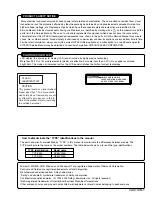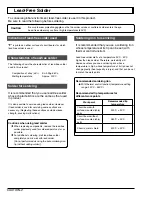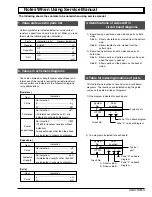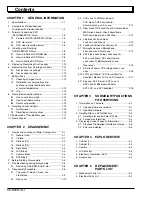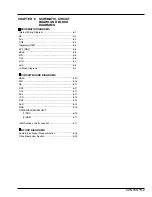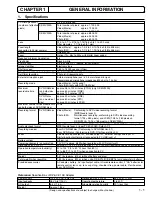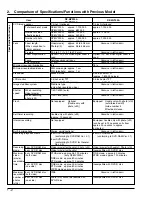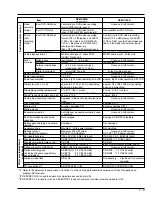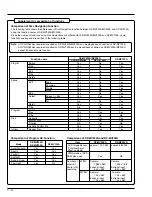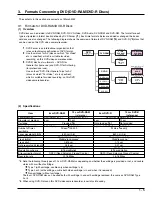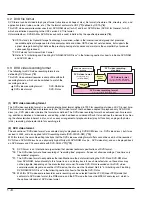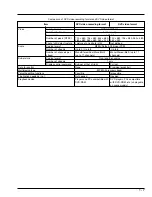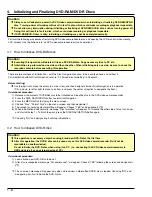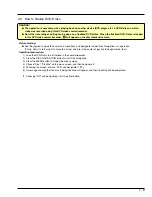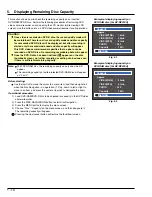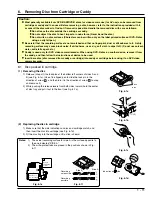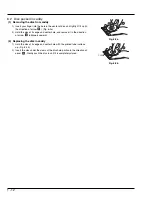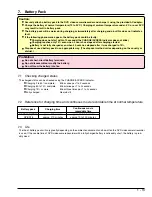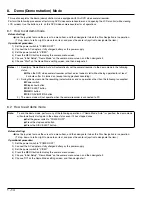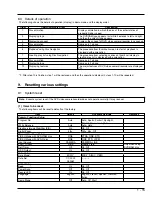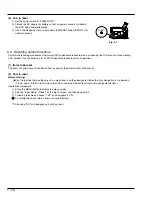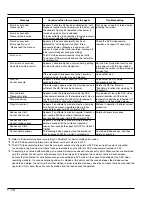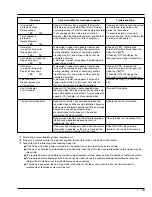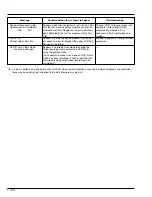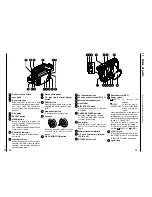
1 - 6
3.2
DVD file format
DVD format can be divided into physical format (structure and shape of disc), file format (structure of file, directory, etc.), and
application format (video, audio, etc.): The file format conforms to UDF (*7) defined by OSTA (*6).
This DVD video camera/recorder uses 8 cm DVD-RAM discs (for AV) and 8 cm DVD-R discs (DVD-R for General, for AV),
which are initialized according to the UDF version 2.01 file format.
Unformatted 8 cm DVD-RAM or DVD-R disc cannot be used: Initialize it by the specified procedure (*8).
*6: OSTA stands for Optical Storage Technology Association, which is the internal industrial group that promotes
recordable optical storage used to store computer data and video. OSTA does not set standards, but supports the
optical storage industry that defines the practical phasing of standards and maintains the compatibility of products
subsequently produced.
*7: UDF stands for Universal Disk Format.
*8: Refer to "4. Initializing and Finalizing DVD-RAM/DVD-R Discs" in the following section for how to initialize DVD-RAM
and DVD-R discs.
3.3
DVD video recording format
The following two DVD video recording formats are
defined by DVD Forum (*9):
This DVD video camera/recorder is compatible with both
recording formats, which can be switched to match the
recording medium.
DVD video recording format :
DVD-RAM disc
DVD video format :
DVD-R disc
(1) DVD video recording format
The DVD video recording format is a common international format defined in 1999 for recording of video on DVD in real time.
This format was established with reference to the "DVD video format" that had been adopted for playback-only DVD-ROM
discs (i.e., DVD video discs) before this format was defined. The DVD video recording format has achieved real-time record-
ing, addition or deletion of video/audio, and editing, which had been considered difficult. It also defines the devices for achiev-
ing the characteristics inherent in disc, such as easy arrangement of playback order (play list function), coping with photos
(stills), recording of character data for searching, etc.
(2) DVD video format
The conventional "DVD video format" was adopted only for playback-only DVD-ROM discs (i.e., DVD video discs), but it was
revised in 2002, and also applied to DVD recording media (DVD-R/DVD-RW). (*10)
With this format, the versatile editing functions that the DVD video recording format offers cannot be used, but the recorded
DVD-R and DVD-RW discs have a physically high affinity with DVD-ROM disc (i.e., DVD video disc), and can be played back
on DVD players and PCs compatible with DVD-ROM. (*11)(*12)
*9:
DVD Forum is an international organization that decides technical specifications of DVD format.
*10: The DVD video format allows recording of "recording free" programs: It does not allow recording of "one-time only
recordable" programs.
*11: The DVD video format newly defines the identification method of discriminating the DVD-R and DVD-RW discs
from DVD-ROM, but conformity to this format is on a voluntary basis for each manufacturer, so these discs may
not be playable, depending on the manufacturer or model. To make DVD-R disc recorded on this DVD video
camera/recorder playable on another DVD device, the disc must be finalized: Refr to "4. Initializing and Finalizing
DVD-RAM/DVD-R Discs" in the following section for how to finalize the DVD-R disc.
*12: With this DVD video camera/recorder, audio recording can be selected from the LPCM (linear PCM)mode that
conforms to DVD video format, the FINE mode, and the STD mode that uses the MPEG2 audio layer 2, which is
the optional standard of DVD video format.
Reference
(1999)
DVD video recording
standard
DVD video fromat
[for playback only
(for DVD-ROM)]
DVD video format
[for recording (DVD-R/RW) &
for playback only (DVD-ROM)]
Revised
(2000)
DVD video recording format
[for recording (DVD-RAM/DVD-RW)]
DVD video playback-only
standard


